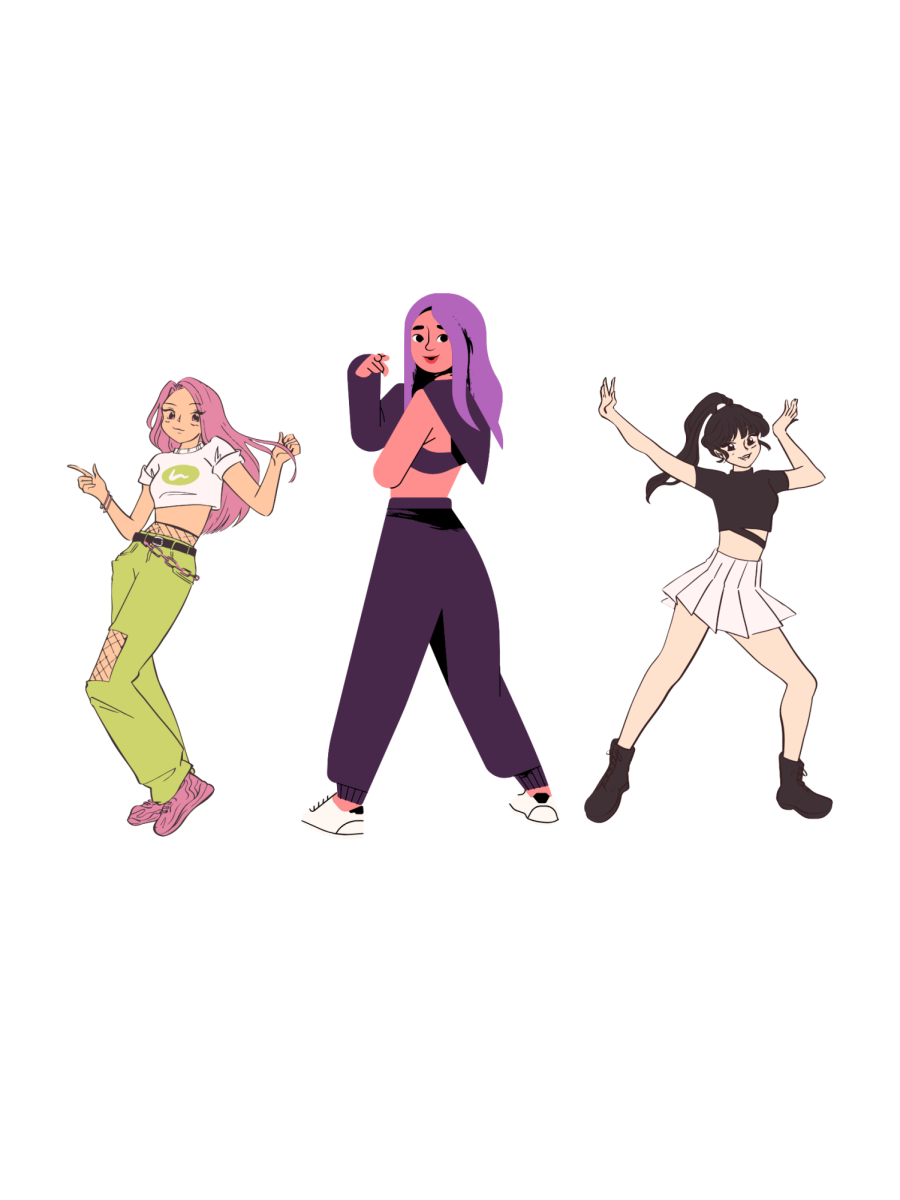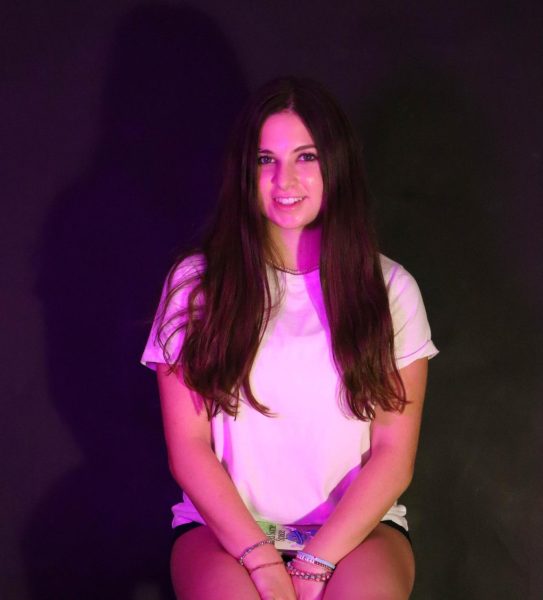From the thousands of francs spent on Marie Antoinette’s hair ribbons to TikTok’s coquette alternative to shoelaces, bows have tied themselves in the history of fashion. One of the most prominent motifs of girlhood, ribbons have reinserted themselves in the styles of women and girls, from the high fashion runways of Miu Miu, Simone Rocha, and Sandy Liang to numerous social media posts. However, enlaced with this trend is a notable shift in women’s self-expression compared to past generations—one that highlights a longing for simpler nostalgia as well as a growing appreciation of femininity and stereotypically “girly” styles.
The accessory dates as far back as 2600 to 2500 BC, as seen with the set of golden Sumerian hair ribbons currently at the Metropolitan Museum of Art. In the late 18th century, hair bows captivated the French aristocracy, sparked by a mistress of Louis XIV, Marquise de Fontange’s, resourceful use of a dress ribbon to tie up her locks and avoid a scandal.
Recently, this symbol of girlhood has begun to revert to its roots of sophisticated feminine allure, aligning with the popular coquette aesthetic on TikTok. Along with Tiktok, bows have taken over Instagram feeds with hundreds of tutorials on how to include ribbons in everyday outfits. Many influencers have come up with their own creative bow-adding approaches.
“I’ve also seen them clipped on people’s skirts, specifically on the side,” junior and active bow-wearer Cassidy Cruzada said.
On the surface level, Gen-Z’s current obsession with the visual flair of bows stems from a love of playful maximalism. However, ever-present is the fulfillment of a community of womanhood, one where members actively acknowledge and celebrate their fellow girls’ fashion choices.
“We’re all kind of looking at these trends we always talk about, like the trends we see on TikTok and Pinterest. And when people recognize it, things like a simple bow… It’s a way for us all to connect, especially women,” sophomore and Fashion Club co-president Grace Asher said.
Ironically, though, the root of why this trend resonates with older generations also seems to be the very mechanism promoting it, social media. Bows and ribbons offer a touch of youthfulness in a digitally altered world where young girls feel like they need to dress and act older based on external online influence. A virtual world that intensifies girlhood’s nostalgia—a time when the struggle of inadequacy women faced for the male gaze was absent.
“I think the bows are just kind of for people in high school,” sophomore and Fashion Club co-president Maiori Butz said. “We kind of wish that we didn’t grow up as fast, and we want to go back to where we didn’t care what people thought about us—to enjoy just being a girl.”
Whether it be using ribbon as a makeshift belt or tying them to bags, this trend fully embraces the girly frivolity of it all. It is a notable switch from the styles of the past, where women sought to retaliate against rigid Western conservatism, as seen with the “greaser girl” of the 1950s or the “grunge” subculture of the 1980s and 90s. The rejection of stereotypically “girly” styles became a cultural phenomenon, sparking conversations about female empowerment and defying objectification. However, eventually this movement of “not being like other girls” became another avenue for the male gaze, highlighting how even women’s efforts to subvert societal expectations ended up commodified and controlled by rooted misogyny.
Now we are entering a revival of girlish ruffles and pink fashions, begging the question: how does fashion morph and mark our ever-changing standard of female style?
“Fashion is always evolving; it’s dynamic,” said Valencia College Professor Mandy Mahaffey, who specializes in women and sexuality studies. “It’s both iterating elements of the culture within the ways we dress and the ways we fashion ourselves, the ways we consider our identities within and without culture, and the responses that we have to push back on said culture.”
Fashion has served as a vessel of self-expression, utilizing silhouettes and fabrics to express one’s womanhood.
“This push for more feminine textiles, fabrics, and, specifically, bows, is in many ways a counter-narrative to the idea that you can only be one way of woman in the world,” Mahaffey said. “You can be a woman in so many ways and still capture this idea, but especially by using traditional notions of femininity and representing them on our bodies. Thus, creating these intricate, complex ideas… influences the ways that women think about themselves and about femininity as a whole.”
Throughout different periods and different cultures, fashion has represented more than just an article of modesty, especially for women. It bridges one’s inner self-expression with the entire solidity of womanhood. Whether punk studded belts or light pink ribbons are in style, it is the fitted form of femininity with its many shades of empowerment that will always remain timeless.
Beyond the Bows and Frills
Ribbon fashion trend is aiding the reclamation of femininity
Categories:
Freshman Olivia Agnew ties a pink bow into sophomore Emma Hartung’s hair. Bows, a stylish yet classic accessory, are making a comeback in the world of fashion.
0
Navigate Left
-
 LifestylesFalling For Fall
LifestylesFalling For Fall -
 Lifestyles"KPop Demon Hunters" Review: A Golden Movie
Lifestyles"KPop Demon Hunters" Review: A Golden Movie -
 LifestylesDesk to Destination
LifestylesDesk to Destination -
 LifestylesSeverance: A Mind Splitting Masterpiece
LifestylesSeverance: A Mind Splitting Masterpiece -
 LifestylesLife of a Chess Master
LifestylesLife of a Chess Master -
 LifestylesTrouble With Texting
LifestylesTrouble With Texting -
 LifestylesCanine Counseling Connections
LifestylesCanine Counseling Connections -
 LifestylesMS Play Sparks Nostalgia
LifestylesMS Play Sparks Nostalgia -
 LifestylesMarvel's Brave New Step
LifestylesMarvel's Brave New Step -
 LifestylesCapture the Cosmos
LifestylesCapture the Cosmos
Navigate Right
About the Contributors

Ana Herrera, Social Media Editor
Ana Herrera is a senior entering her second year on staff. She is very excited to be the current Broadcast and Social Media Editor, in other words making use of the fact she is chronically online. In her free time, she loves to write poetry, perform musical theater and shop for Jelly Cats. Contact her at [email protected].

Ella Eichenholz, Photographer
Ella Eichenholz is a junior entering her first year on staff. She is a photographer for the Trinity Voice. In her free time, she enjoys going to the gym or taking naps that last hours. Contact at [email protected].




